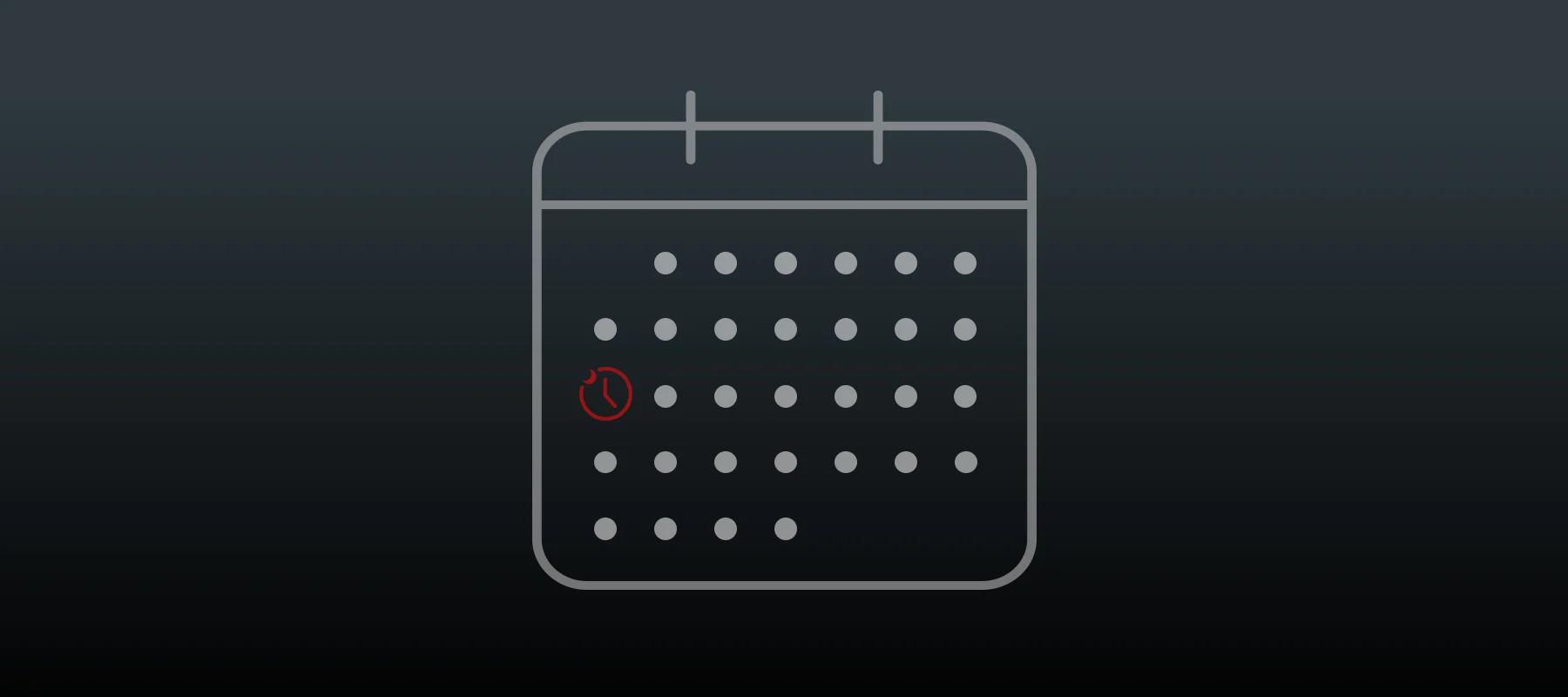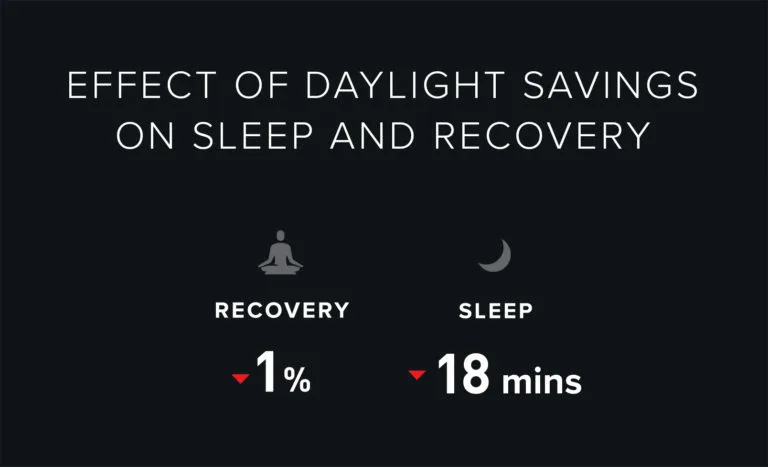Topics
- Article
- Sleep
How Daylight Savings Impacts Sleep & Recovery

We examine the effect setting clocks ahead an hour for Daylight Saving Time has on WHOOP members’ data the next day.
Spring is right around the corner, which means it’s time to adjust our clocks for Daylight Saving Time. And while many of us greatly enjoy the extra hour of light we get in the evenings before the sun sets, nobody likes initially losing that hour in the middle of the night while they’re sleeping. But, just how much does that shortened Saturday-night-into-Sunday-morning actually affect us the next day? The answer is not as much as you might expect. Here’s what we learned by studying the average sleep and recovery data of our members around Daylight Savings last year.
Setting a Baseline
To determine a baseline, we first calculated the average sleep times and recoveries for WHOOP members over a span of several Saturday nights/Sunday mornings prior to Daylight Saving Time. Since most of the population tends to follow similar schedules from week to week and often has different sleep patterns on the weekends, it was important to only look at this particular night/day of the week. Another factor we took into consideration was people beginning to sleep more while quarantining due to COVID-19. Our data shows this started to happen right after US Daylight Savings in 2020 (March 8). For this reason, we chose to only use sleeps and recoveries prior to that date.
Sleep & Recovery Norms
We found that leading up to Daylight Saving Time last year, WHOOP members slept an average of 7:02 on Saturday nights, and woke up with an average recovery of 56.7% on Sunday mornings. Did these numbers drop on the night we set the clocks forward an hour? Yes, but we didn’t actually “lose an hour of sleep”--not even close.
Differences in Sleep & Recovery Following Daylight Savings
On the night of Saturday March 7, 2020, our members slept an average of 6:44, just 18 minutes less than the norm. The average Sunday morning recovery on March 8 was 55.7%, only 1% below baseline.

Impact of Time Change on Circadian Rhythm
Even though the immediate disruptions of Daylights Savings to WHOOP members’ baseline metrics are minimal, there are potential repercussions of the time change throwing off your circadian rhythm (your body’s 24-hour internal clock that regulates your sleep/wake cycle). We took a deep dive into this subject on Episode 97 of our podcast last fall, How Daylight Savings Affects Your Body. The key takeaway is that with behaviors to improve your sleep consistency (going to bed and waking up at similar times each day) you can maximize the quality of your sleep, even if/when you can’t get all the sleep you need. Learn More: How Much Sleep Do I Need? WHOOP Sleep Planner Has the Answer The 4 Stages of Sleep & Average Amount of Time People Spend in Each